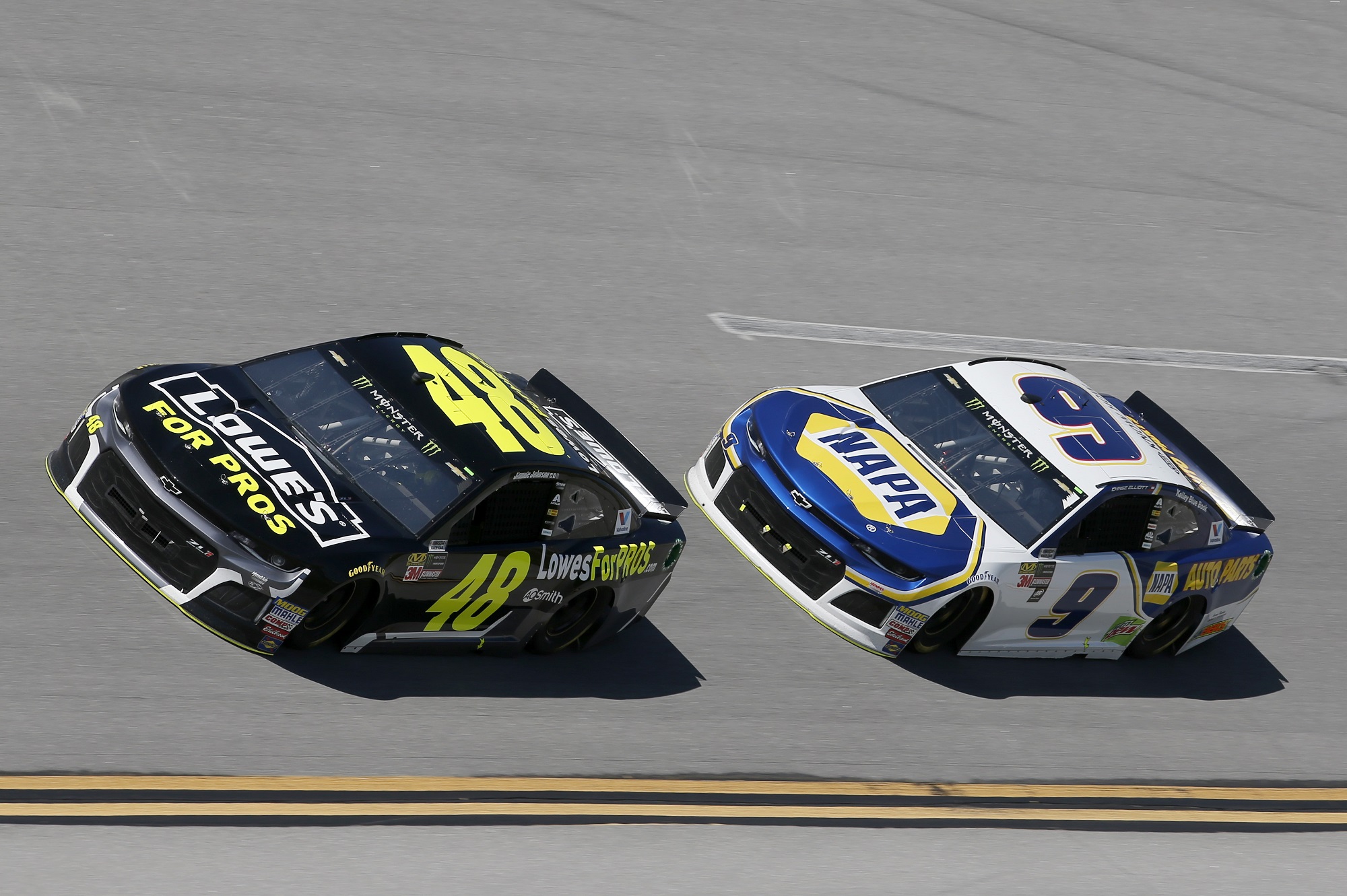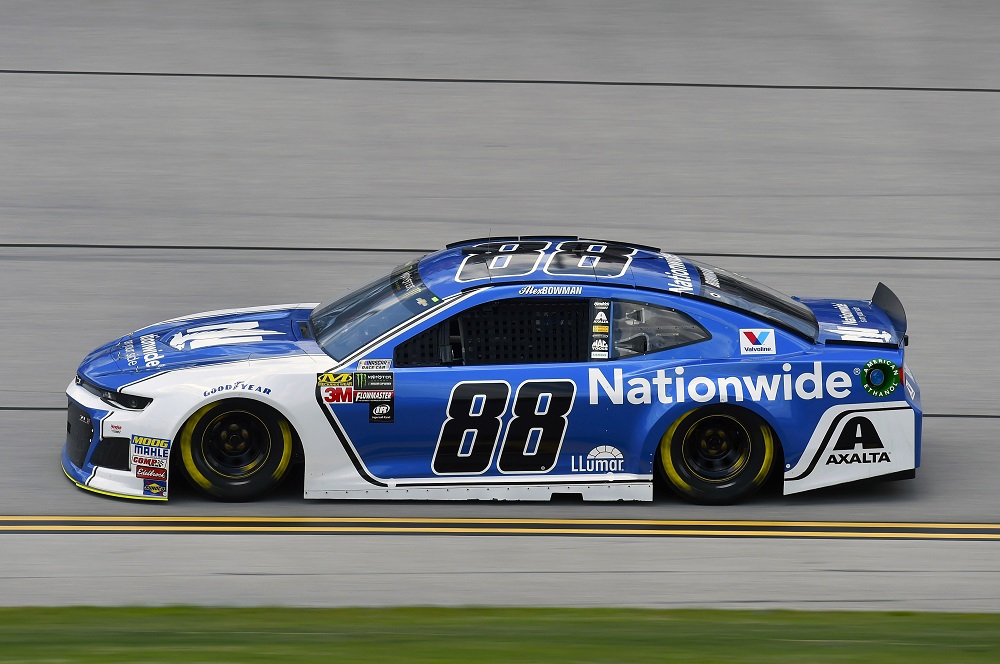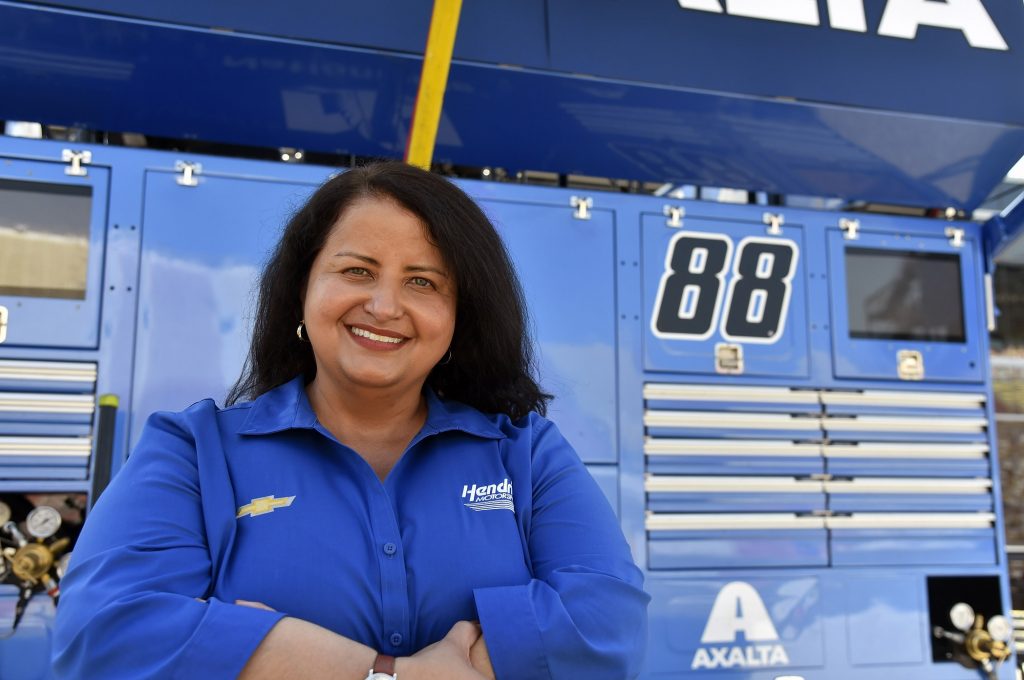Motor sports engineer Alba Colón breaks barriers, goes digital for speed and wins
When Chevrolet won 14 NASCAR Cup Series manufacturer championships in 15 years, the feat was largely associated with the famous men – drivers, crew chiefs – hoisting trophies in victory lane. But much of the success came from a fiercely smart woman working behind the scenes: Alba Colón.
From 2001 to 2017, the motor sports engineer managed Chevrolet’s NASCAR Cup program for General Motors, where she refined technical details with drivers, engineers, crew chiefs and team owners. A native of Spain who grew up in Puerto Rico, Colón joined General Motors in 1994, worked her way up the ranks and is now one of the most influential women in NASCAR.
In January, Colon left General Motors to become the director of competition systems at Hendrick Motorsports, a prominent racing organization that holds 12 Cup championships, an all-time record. The team, which recently renewed its partnership with Microsoft, includes drivers Alex Bowman, rookie William Byron, Chase Elliott and seven-time Cup champion Jimmie Johnson.
With the 2018 NASCAR Cup Series in full swing, we chatted with Colón about data, digital technology and what it’s like being a trailblazing female, Hispanic engineer in the top level of auto racing.

TRANSFORM: What’s your mission at Hendrick Motorsports?
COLÓN: As the director of competition systems, the bottom line for us is to provide the best track tools – simulation, data analytics, communications networks – for our [four] teams. At the end of the day, we work for our teams. We need to provide the best data for them to win races and championships.
TRANSFORM: What first drew you to auto racing and engineering, and what do you love about it now?
COLÓN: As a little girl, I wanted to be an astronaut. I wanted to emulate Sally Ride [first American woman in space]. That’s why I decided to be a mechanical engineer. While I was studying, a professor inspired me to consider auto racing through a student project, where we built a race car and raced it in the United States. That’s where my whole passion started in auto racing.
One of the main things that I love about racing is the pace. You have to make decisions really quick. The green flag drops every Sunday, and you need to have the ability to take a problem and find the best way to resolve it immediately.
TRANSFORM: What are some of the biggest changes you’ve seen in how motor sports engineering has evolved with data and technology?
COLÓN: One of the first jobs I did [in auto racing] was data acquisition. At that time, all the data the teams got was what the driver told them or what an engineer saw looking at a car at the track. We were starting to experiment with data acquisition and I remember we took two to three main channels of data.
Fast forward to today, when I go to a test session, we can take seriously 100 to 200 channels of information. We analyze data from wind tunnels to tires to how a driver is supposed to perform. So the whole magic is how do we get that information and better apply it to make our teams go faster and win? We’re using computer science disciplines like data analytics, edge computing, machine learning and artificial intelligence to maximize our track performance and get a competitive advantage.
TRANSFORM: What digital tools do you use to help your teams prepare for a race?
COLÓN: Keeping track of vehicle data and notes from drivers and engineers during each event is critical. Those items are the foundation in preparing for the next race weekend. We constantly use applications like OneNote and Excel to capture these data points and keep them well-organized. Reviewing these notes for a driver can be particularly important as tracks from week to week vary greatly.
TRANSFORM: During a race, what’s an example of data analytics that helps you make real-time decisions quickly?

COLÓN: Let’s say you come to pit to get fuel or tires, or maybe fix something on your vehicle. You decide based on the data and on how the car is performing, “Do I change four tires or two tires?” That can make a big difference to win or lose a race. I have seen now 12 to 13 seconds for a four-tire pit stop. With two tires, it can be down to six seconds.
You get all this massive data, but the data is nothing if you don’t understand how to use or analyze it. That’s where Microsoft is helping out a lot. You have to have great tools to understand not just what you’re doing, but what the competition is doing, so you can outsmart them.
You can tell your driver, “Hey, the other driver is beating you at Turns 3 and 4, because he is doing something that you are not doing.” You have to analyze data and transmit information immediately to gain a few thousandths-of-a-second, or hundredths-of-a-second, advantage over your competitor.
TRANSFORM: How do you use technology to improve driver and pit crew safety and efficiency?
COLÓN: We travel 38 times a year to the track, and the different tracks that we race – short track, road course, speedway – mean different choreographies for our pit crews. Every pit stop is analyzed and cataloged. We go through the whole choreography to make sure that not only the pit stop is the fastest one, but also the safest.
With Microsoft tools, we have been able to research, catalog and understand better all those choreographies. To be honest with you, it has been a great pleasure to better understand the tools that Office 365 provide us. To have the power of Azure behind us helps us a lot.
This year, I started to use Teams. And trust me, I love that tool. It has been a great way to communicate information back and forth, especially when you have people at the track and people at the shop.
TRANSFORM: How are you using machine learning?
COLÓN: As an example, we are using machine learning to analyze historical data to help us better understand lap trends. Microsoft tools give us an advantage to dissect the data that we have collected over many, many years and apply a predictive way to gain an advantage.
TRANSFORM: You’re one of the most influential women in NASCAR and you received the STEM Award from the Hispanic Heritage Foundation last year. How do you see your role as a pioneering female Hispanic engineer in a largely white, male-dominated sport?
COLÓN: The award was a huge honor. I remember seeing people that I admire getting this award and it’s nothing I ever dreamed I would be on the radar for.
I fell into this sport because it was something that I love. I realized later that what I was doing was breaking barriers and allowing other people to come after me – females and Hispanics. I take this role and responsibility with the utmost respect. I want to be a positive role model for all others to see that this is not a job only for males. If you do your job right, this job is open to everybody.
One of the things that I have brought to this sport is diversity of thought – different ideas and ways to see and resolve a problem. I’m very blessed and I have worked very hard to get where I am. I want to continue doing a good job to open doors to others, and bring different ideas and more people to contribute to this great sport.
Read a news release to learn more about the partnership between Hendrick Motorsports and Microsoft.
Top photo: Alba Colón. (Photo courtesy of Hendrick Motorsports)








